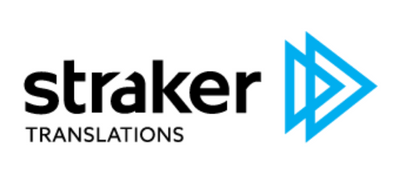Having a website that allows for translation into more than one language lets you communicate with customers all around the world. If you don’t have a multilingual website, you could be losing out on potential business from international markets.
In this blog, we’ll introduce you to a few things you need to consider when structuring a multilingual website and why a good quality translation service is important.
What To Consider When You Structure a Multilingual Website
1. Domain Names
Picking the right domain name is, without a doubt, the most important component to structuring a multilingual website. Domain extensions are sometimes referred to as Top Level Domains (TLDs), with there being 3 types of extensions, which you can use for your website.
ccTLD
Country code Top-Level Domains (ccTLDs) are international domain extensions that are specific to the country they’re in and use the country code they correspond to. They will look like ‘google.fr’ in France, ‘google.de’ in Germany and ‘hypeanddexter.nz’ in New Zealand. ccTLDs can easily separate the content of the website, regardless of the server location.
gTLDs
Generic Top-Level Domains (gTLDs) are your ‘.com’, ‘.net’, ‘.org’, and are well-known around the world. Using a gTLD to set up a number of domains on your current existing server is easy. You can house each domain in a different country or location - and still have a distinct separation of all your different websites.
Subdirectories With gTLDs
Subdirectories with gTLDs are super easy to set up and less expensive to run, especially if you’ve got a basic static website. These will look like ‘google.com.fr’ or ‘google.com.sg’ and SEO marketers recommend you to use this so that all your content is housed on one domain, and you won’t need to buy a hosting service for any other domains.
2. SEO
If you’re using subdirectories and subdomains, you’ll certainly need to use meta tags that indicate the language of each page - since country specific pages aren’t separated from each other by domain. Meta tags are written into the webpage’s HTML code and provide Google with the much-needed information to understand what the content is about when it crawls the page. Whilst headers, keywords and other structures are important to your website, the language of your meta tags is undoubtedly one of the most important multilingual SEO optimisations you should tackle.
A language meta tag will look somewhat like this ‘<html lang = “en”>’ and it surrounds all the content that uses this language, so that Google can understand the context and which audience it’s targeting. When you choose a meta tag, it’s best practice to pick one that best resembles the country and language abbreviation you’ve used in the subdomain or subdirectory. With the correct use of meta tags, Google has all the data to crawl through republished content and direct your audience to their local version of your website.
3. Duplicate Content
If you translate content that already exists as another language on a different subdomain or subdirectory, Google won’t flag your site for having duplicate content. Search engines filter out duplicate content if it’s been published in different languages, so that the language will rank in the country of the reader.
4. The Quality and Accuracy of Your Translation
Google considers the same content translated into different languages as separate pieces of content, therefore you need to ensure the quality of each translation and that every page is optimised for SEO as well as for the reader of course. While free translation tools such as Google Translate aren't terrible, the style of writing, proper use of industry-specific terminology, cultural context and authenticity can get lost in the translation - which is why we recommend that you use a translation service like Straker Translations.
How Can You Ensure Accurate, High Quality Translations?
 Speaking of translation services, we’ve joined forces with Straker Translations. Straker Translations was founded in NZ to address a huge gap in the market for translation services that use both humans and machines for highly accurate, faster and cost effective translations. Straker uses artificial intelligence (AI) to perform an initial and technically accurate translation and deliver the content much faster and more accurately at a lower cost. Then writers whith knowledge of the specific languages and cultures the translation is for, go through it to ensure consistency of tone, meaning and any references are relevant to the audience.
Speaking of translation services, we’ve joined forces with Straker Translations. Straker Translations was founded in NZ to address a huge gap in the market for translation services that use both humans and machines for highly accurate, faster and cost effective translations. Straker uses artificial intelligence (AI) to perform an initial and technically accurate translation and deliver the content much faster and more accurately at a lower cost. Then writers whith knowledge of the specific languages and cultures the translation is for, go through it to ensure consistency of tone, meaning and any references are relevant to the audience.
With clients from different industries and various parts of the globe, they have experience dealing with the specific needs of businesses, and delivering high quality translations.
Using a translation service allows your content to have a consistent style of writing, proper terminology, cultural context and authentic language. So if you’re an international business using a free translation tool, you could be doing more damage than good.
Looking for more information on how to build a multilingual website to reach international customers? We’ll work with you to see what your customers search for and come up with a design blueprint so that you can see how your website will look. So get in touch with us today!


Comments